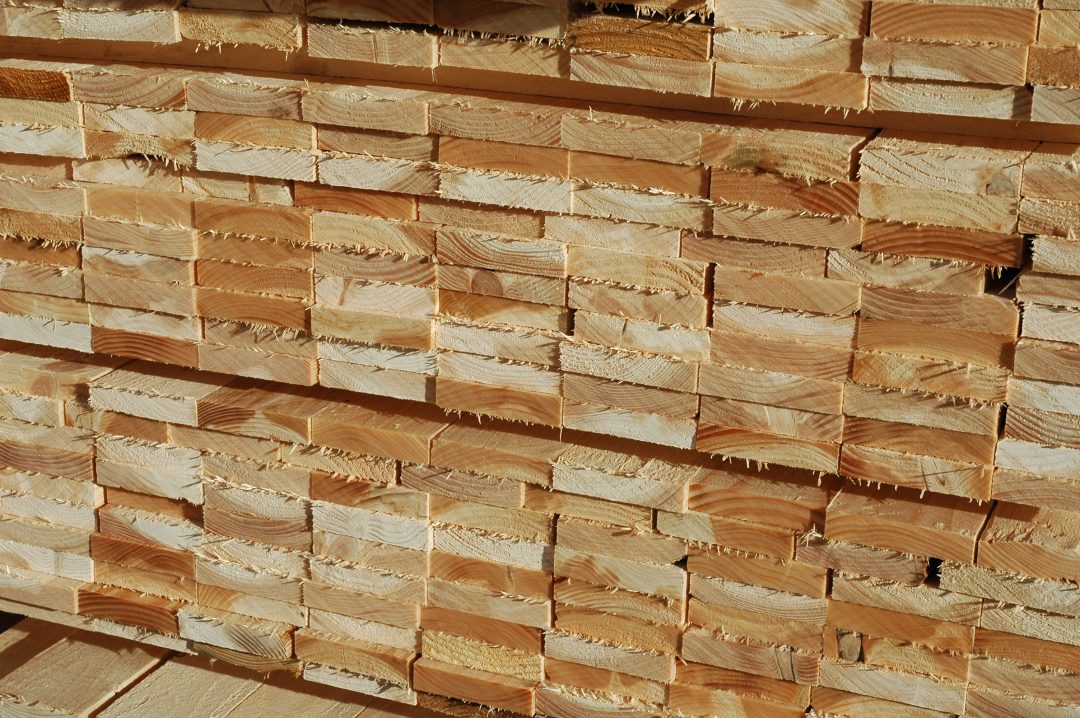
C16+ (pronounced C16 plus) is a strength class developed by us to get the most out of the real properties of home-grown spruce. It is one of several strength classes that are not listed in EN338.
The three grade determining properties of C16+ are:
Characteristic bending strength: 18.5 N/mm2 (compared to 16 for C16)
Mean modulus of elasticity: 8 kN/mm2 (the same as C16)
Characteristic density: 330 kg/m3 (compared to 310 for C16)
(see “Thinking beyond the usual strength grades – with examples of British spruce and larch” and “Sustainable construction timber – Sourcing and specifying local timber”)
The other design properties are calculated in accordance with the equations in EN384 (note that these can change whenever the standard is updated)
Since the strength and density are a little higher than C16 it can be possible to design structures with better performance, or less timber – especially when design is governed by the connections.
One other advantage of C16+ is that (via the equations in EN384) it has a mean density of 396 kg/m3 compared to 370 kg/m3 for C16. This equates to a mean density of about 390 kg/m3 when conditioned in accordance with EN13238 – sufficient to meet the density requirement (380 kg/m3) in clause 5.8 of EN14080:2013 for reaction to fire classification without need for further testing (CWFT). C16 does not meet this requirement (but the ungraded home grown spruce resource does).
C16+ was developed in 2014 and the idea behind it was to have a grade for home grown timber that has enhanced properties, but the exact same settings (and therefore yields) as C16 on a single grade-reject grading scheme that aims for almost zero machine reject.
Since C16+ has better properties than C16, it can be sold (and used) as if it was C16, but those that know what C16+ is can make use of the better design properties. (A lot of thought was put into the name of the grade so that it sounds familiar, and is “fail safe” if someone mistakes it for C16)
C16+ was developed to fit the actual properties of British spruce grown in the UK and Ireland. It is not restricted to this, but it probably would not make much sense to use it for anything else. At time of writing the only grading machine settings that get C16+ are for British spruce from UK and Ireland. There are no visual grading assignments to C16+ (at least not yet).
So all C16+ can be treated as C16, but C16 cannot be treated as C16+, even when it is made from British spruce from UK or Ireland on a single grade reject setting. It can only be done when the settings explicitly say that they produce C16+. While the timber might have sufficient strength and density to meet the C16+ specification it is not formally shown to be the case.
Since C16+ is produced by a machine grading process with minimal machine reject (plus the visual override) you might expect its properties to reflect those of ungraded British spruce. This is true – and it does – but you need to bear two things in mind:
1) The target mean stiffness for graded timber is modified by a factor of 0.95 since the testing is done with the worst defect located centrally. It is assumed that the real mean stiffness is therefore a bit higher than the value reported directly from testing.
2) When machine grading, the strength target can be modified by a factor of 1.12. This means machine graded timber can be designed as if it is a bit stronger than the value directly reported from testing. This seems unsafe at face value, but this is actually how the European Standards for timber indirectly make a different material partial safety factor (for machine and visual grading) when a single one has to be used in Eurocode 5 (because design has to be agnostic on how the timber was graded).
For more on those topics, see “Strength grading of sawn timber in Europe – an explanation for engineers and researchers”
You might now be thinking “so what is the point of grading then?” Well, even though the grading aims for minimal reject there is still reject – there is still a process (both the machine and the visual override) that intercept and reject the very worst pieces and by doing so ensure that the strength class requirements are met. That’s the important difference between graded and ungraded timber.
C16+ is now on the market, and is being used in real projects. Its design values were included in Tekla Tedds in 2018.
An example:
https://twitter.com/makarneil/status/1230495609477640194
Bonus content for reading this far
An interactive 3D model of the microstructure of Sitka spruce

Leave a Reply
You must be logged in to post a comment.